Syrian refugees in Lebanon tear down walls to keep their homes
Syrian refugees are facing a wave of hostility in Lebanon, writes Richard Hall
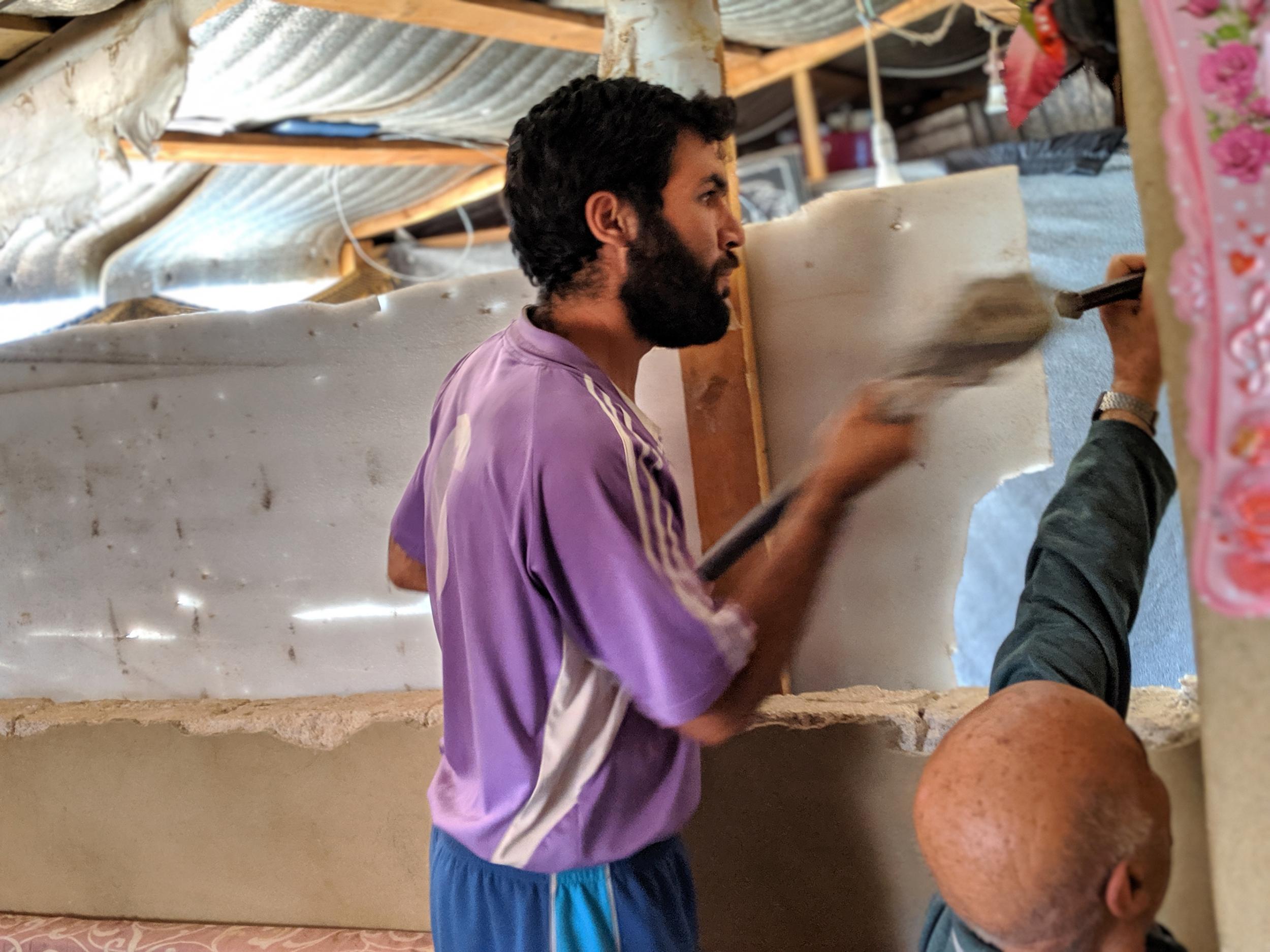
Your support helps us to tell the story
From reproductive rights to climate change to Big Tech, The Independent is on the ground when the story is developing. Whether it's investigating the financials of Elon Musk's pro-Trump PAC or producing our latest documentary, 'The A Word', which shines a light on the American women fighting for reproductive rights, we know how important it is to parse out the facts from the messaging.
At such a critical moment in US history, we need reporters on the ground. Your donation allows us to keep sending journalists to speak to both sides of the story.
The Independent is trusted by Americans across the entire political spectrum. And unlike many other quality news outlets, we choose not to lock Americans out of our reporting and analysis with paywalls. We believe quality journalism should be available to everyone, paid for by those who can afford it.
Your support makes all the difference.The sound of a hammer striking concrete echoes around the sprawling refugee camp. Outside almost every tent, piles of broken breeze blocks show the hard work of the past few days. An exhausted Salah Mustafa, a 35-year-old Syrian refugee who fled to Lebanon five years ago, is one of the last to finish tearing down the walls of his home.
“I built these walls to keep my mother warm,” he says, during a break. “She has trouble with her kidneys so she feels the cold more than anyone else. But even with the walls, the winter is unbearable.”
The next winter is likely to be much worse for Mustafa’s family, and for the thousands of other Syrian refugees here in the Lebanese border town of Arsal, who have spent days dismantling the concrete shells of their shelters in order to save them from being demolished entirely.
The Lebanese army have threatened to destroy more than 5,000 refugee shelters that were in violation of government regulations. More than 25,000 people were at risk of being made homeless by the planned demolitions. The warning prompted a flurry of activity as men, women and children grabbed pickaxes and hammers to bring down the brick walls to less than one metre high.
“It took me three days,” says Nahla Ammar, a 48-year-old mother from Aleppo. “My husband is old and sick, so I had to do it myself,” she adds, as she holds out her dusty hands.
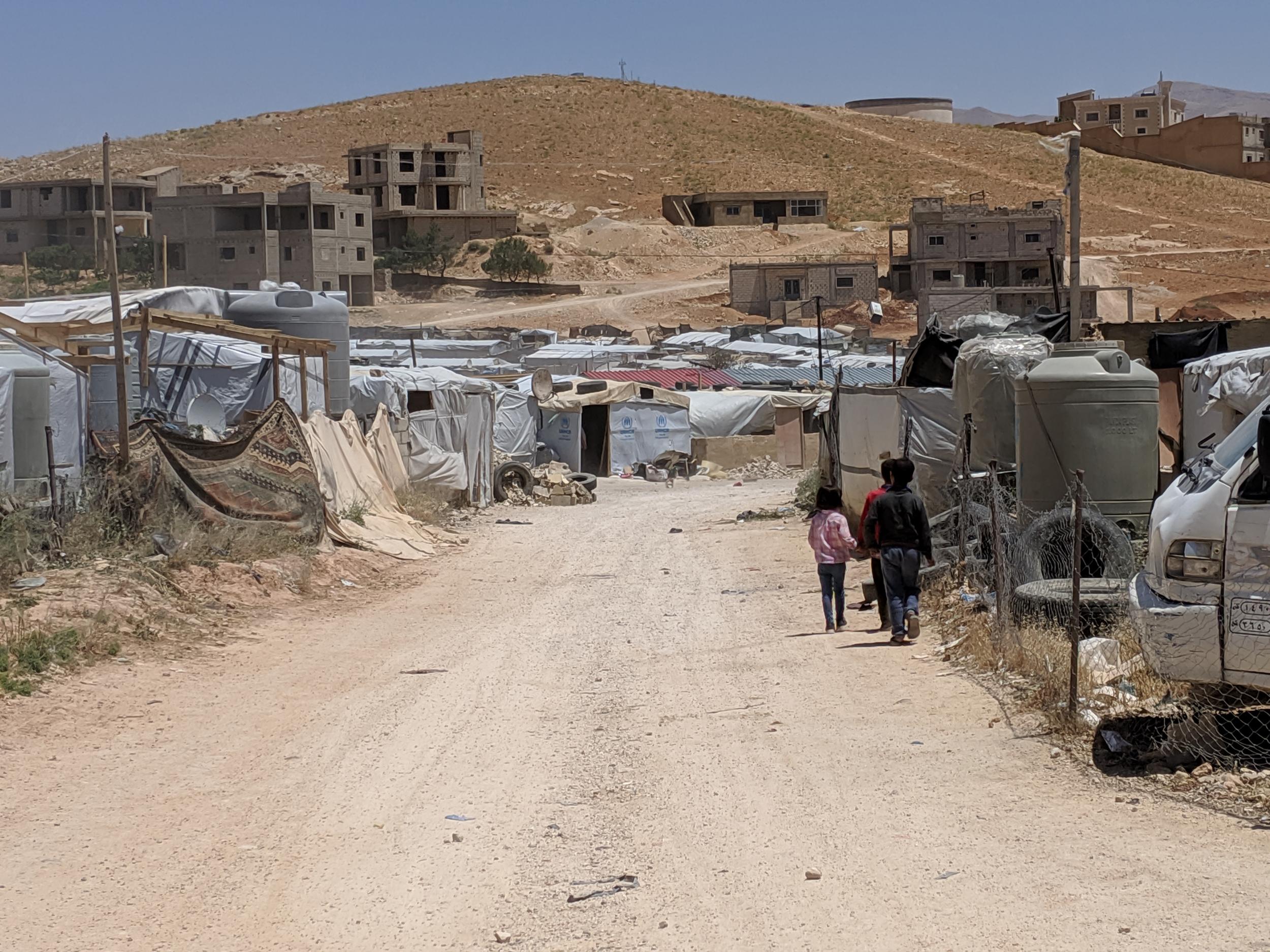
On the surface, the episode was little more than an overdue enforcement of building codes that have been in place for years. But for many Syrians in Lebanon, the crackdown in Arsal is just another reminder of the precariousness of their position, and of the delicate tightrope they walk daily in a country where politics and humanitarian aid are wrapped into one.
Eight years into Syria’s devastating civil war, more than a million refugees remain stuck in limbo here, too afraid to return home to a country still stricken by conflict, where forced conscription and arbitrary arrests are commonplace.
The incident comes just days after more than 600 refugees were forced to leave their shelters in the town of Deir al-Ahmar, in the Bekaa valley, following an altercation with locals.
Despite the obvious dangers, the pressure on Syrians to return is increasing. Evictions and army raids on refugee camps are on the rise, towns have introduced curfews specifically for Syrians, ministers and politicians have made repeated calls for them to go home.
We grew jasmine, all kinds of flowers, grapefruits, olives. It was a happy life
A worsening economy has been blamed for an added urgency to these calls, but at the root of the issue is a profound and historic fear that the continued presence of Syrian refugees will disrupt the country’s precarious demographic balance.
Analysts say this fear has made it de facto government policy to keep refugees in a state of discomfort in order to dissuade them from staying permanently.
“What’s happening in Arsal is one part of a strategy we’ve been seeing in Lebanon over the past few weeks aimed at putting more and more pressure on Syrian refugees to leave,” says Dr Nasser Yassin, director of research at the Issam Fares Institute for Public Policy and International Affairs.
“It’s a policy to create a hostile environment for Syrian refugees,” he adds.
This concern, according to Mustafa, is unfounded.
“It has never crossed my mind to stay here,” he says. “When there is safety and security, I will go. The same is true for everyone else.”
Mustafa and his family live in a small shelter, along with his mother and father. He added the walls to his temporary home in 2015 after a particularly brutal winter in the valley where Arsal lies.
During those months, snow regularly blankets the town and buries the shelters, causing roofs to collapse. The presence of a breeze block factory right next to the camp led many to take action and build up their walls.
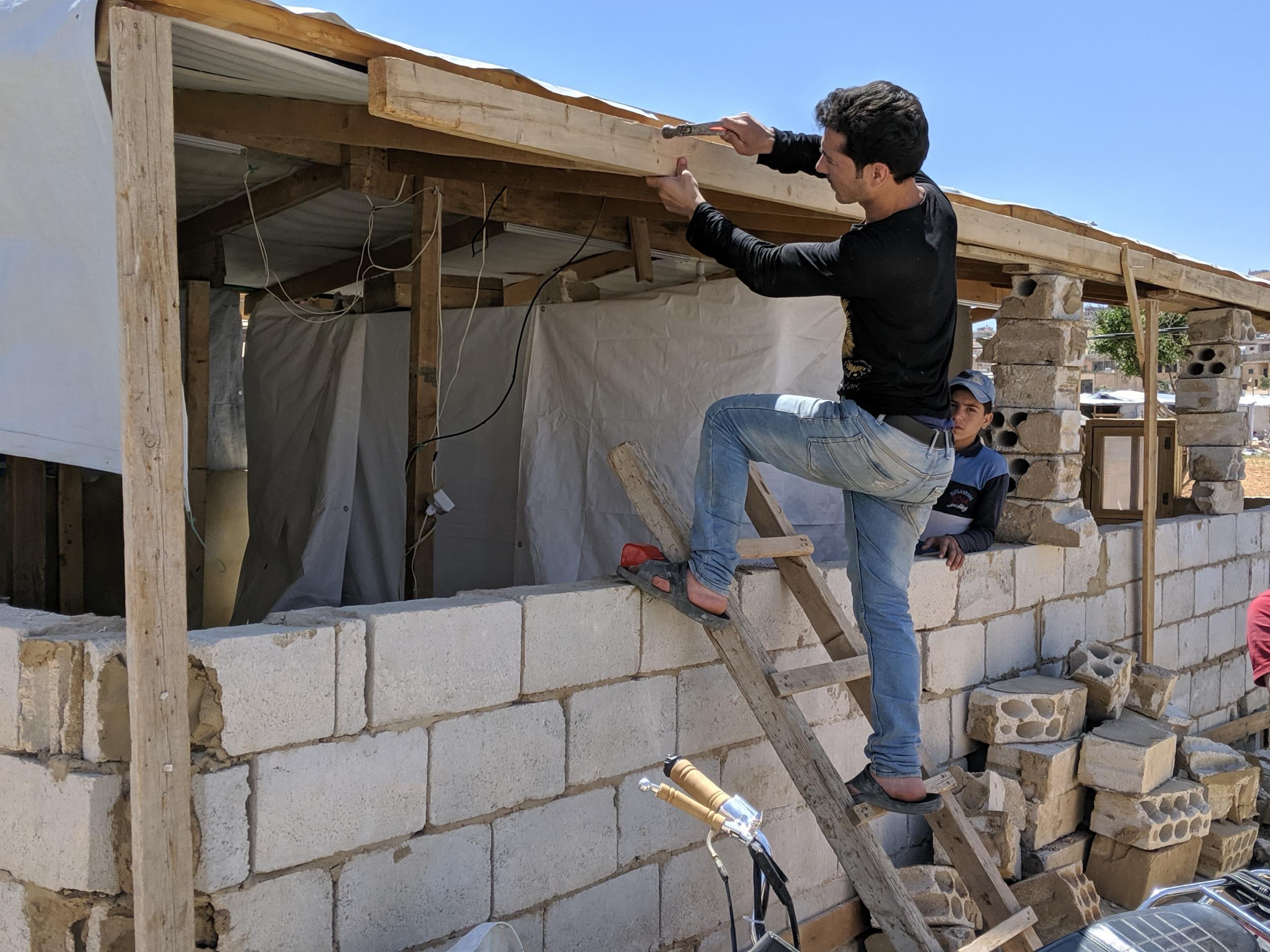
Lisa Abou Khaled, spokesperson for the United Nations’ refugee agency, describes the winters in Arsal as “sub-zero temperatures, strong winds, heavy rains and snow that result in floods, leakages and damaged shelters.”
She says: “Some refugees in Arsal had to build hard structures in their shelters to protect their families from the harsh winter elements.The structures are a result of an understanding with their landlords, and refugees did not necessarily know that they were in violation of Lebanese laws.”
Most residents of the informal camps in Arsal were able to fix their shelters to meet the regulations. Some had to abandon their homes entirely.
Fatimah Hammoud, a 25-year-old mother of four, stands in front of a waist-high wall that used to be her shelter. The structure, which was already built when she moved into it, was made entirely of concrete, so she was unable to make the adjustments.
She begins to cry when she remembers the frantic dash to prevent the complete demolition of her home.
“We heard about the planned demolitions from the police. I was so scared that [the army] would do it themselves, so we decided to do it the next day. I packed up my things and my husband and his friends took it down,” she says, as her children play where the shelter used to be.
“We prefer to remove half of it then lose it all,” she adds.
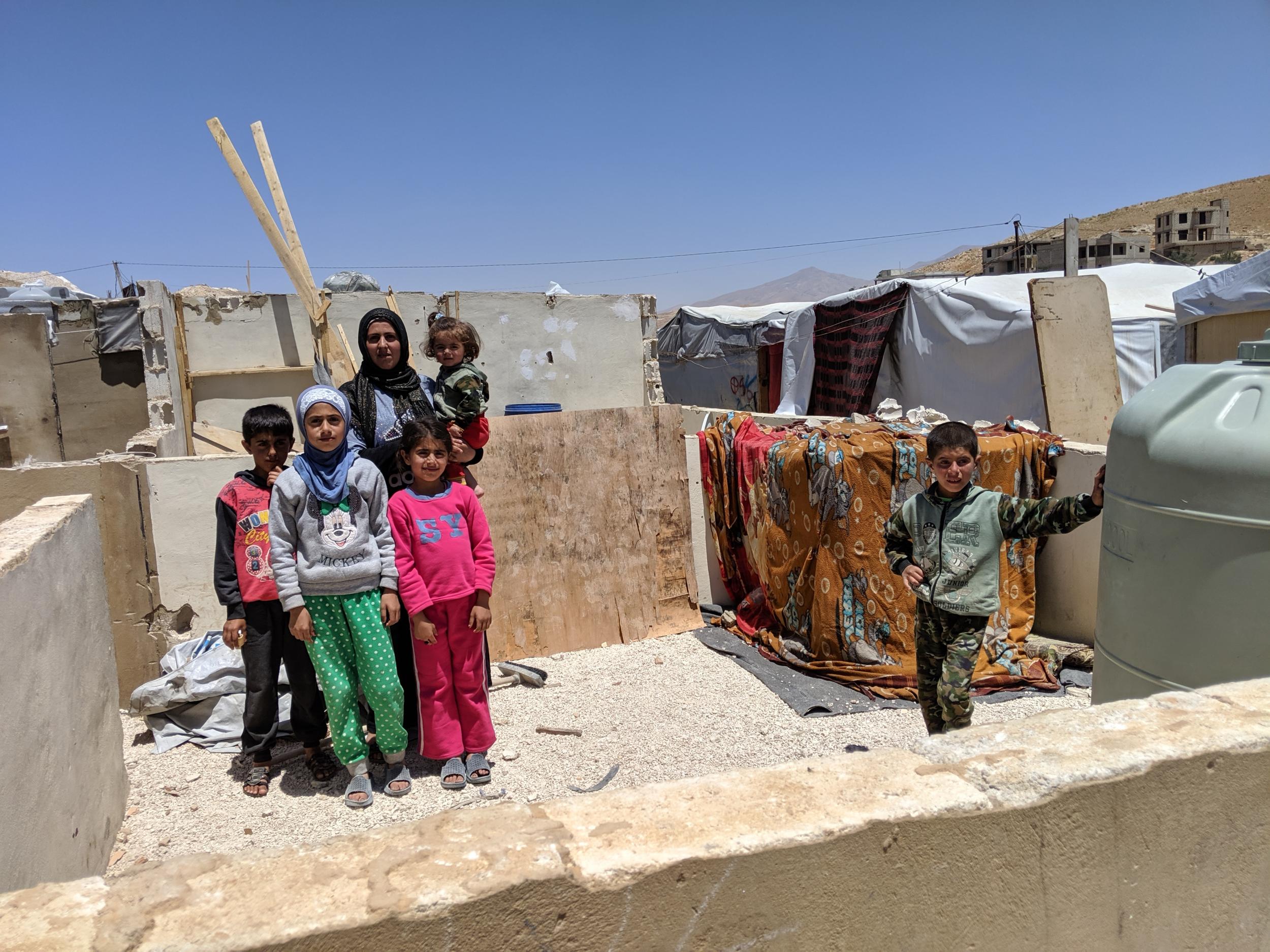
Hammoud moved into a neighbour’s shelter nearby. When she finds the wood and plastic that she needs to build a new roof she will move back in. But she is worried about the winters to come.
“I can’t even think about it,” she says. “We couldn’t keep the house warm with walls, how will it be with sheets?”
This is something that concerns humanitarian groups too.
“Now that the demolitions have been postponed, our concern is for when winter arrives,” says Hans Bederski, national director of World Vision in Lebanon, which operates across the country. “Refugees suffered last winter even with brick walls – rainwater still managed to enter their homes and roofs could not withstand the snow.”
Not far from Hammoud’s shelter, 28-year-old Ali Shehadi is halfway up a ladder propped up against his shelter. Yesterday, its walls reached two metres high, today they are at his waist. Shaky wooden beams now hold up the roof.
“We can adapt, but it’s going to be difficult,” says Shehadi, a father of two who fled Syria during his second year of law school. Today he takes jobs in construction when he can, but work is drying up.
“It’s becoming more and more difficult for all the refugees. All of these things, we consider them signs that we should go home, but it is still not safe.”
Some Syrians are going home, however. In March, Lebanese authorities announced that more than 170,000 refugees had returned “voluntarily” since December 2017. But rights groups have questioned just how voluntary these returns are.
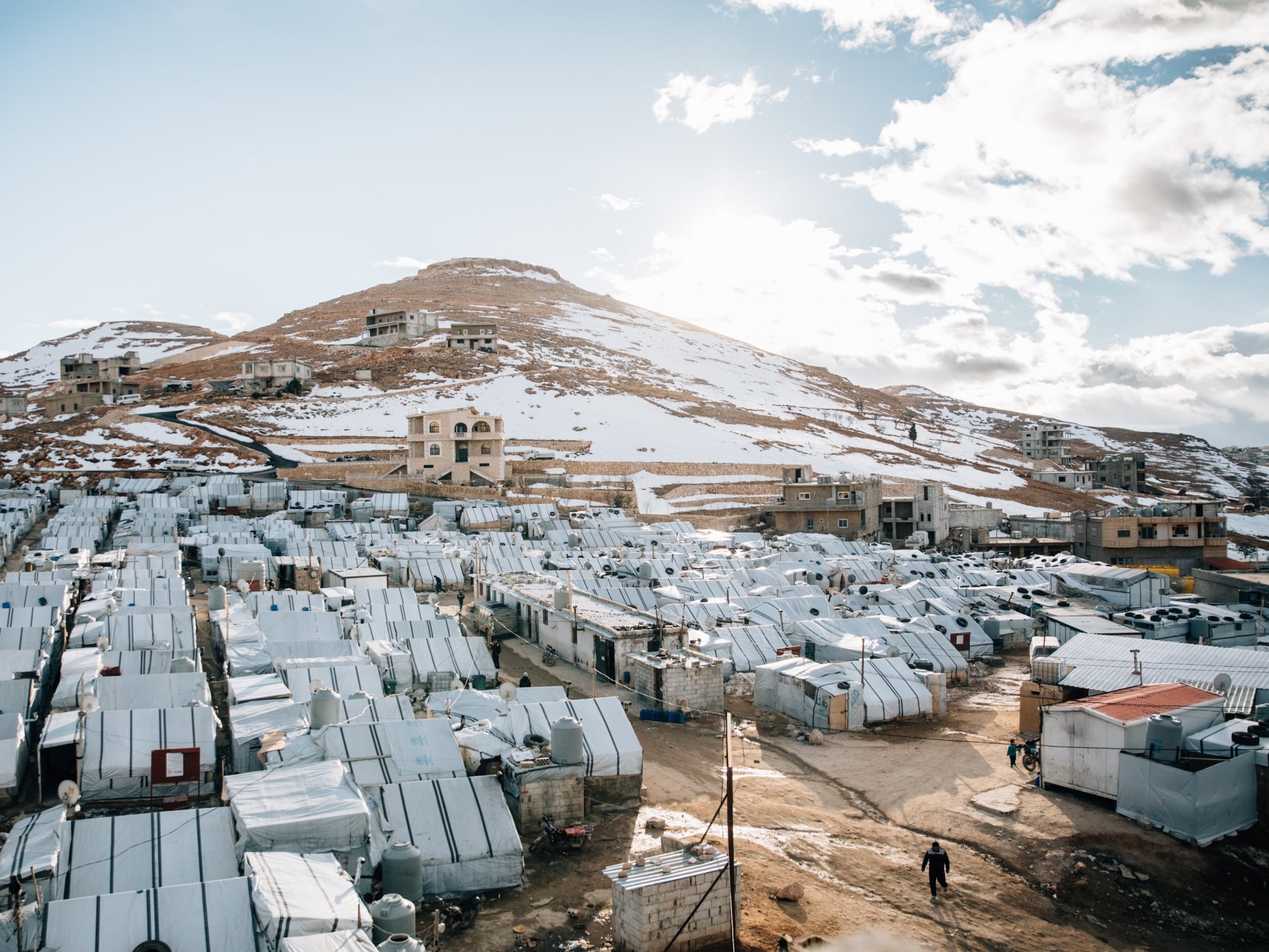
In a report released on Wednesday, Amnesty International said that refugees in Lebanon “are being pushed back to Syria through a combination of restrictive government policies, dire humanitarian conditions and rampant discrimination”.
The report cited an attack on an informal refugee camp in the town of Deir al-Ahmar by locals as “a clear example of the escalating hostility which is driving many refugees to leave Lebanon”.
Tensions in the town boiled over when a fire broke out at the camp on 5 June. Refugees reportedly got into a scuffle with firefighters after complaining that they arrived too late.
“Later that night, at least 50 men arrived and began to attack the camp, setting three tents on fire and using a bulldozer to demolish another two,” Amnesty said.
“The recurrent raids on refugee camps in Arsal and mass arrests in the past few years has created an environment of fear and intimidation, making the lives of refugees even more difficult,” says Diana Semaan, Amnesty’s Syria researcher.
Despite all the difficulties of Lebanon, Syrians such as Mustafa see it as preferable to a jail cell in Syria. But it doesn’t stop him dreaming of his home.
“It was heaven,” he says. “We grew jasmine, all kinds of flowers, grapefruits, olives. It was a happy life.”
Join our commenting forum
Join thought-provoking conversations, follow other Independent readers and see their replies
Comments